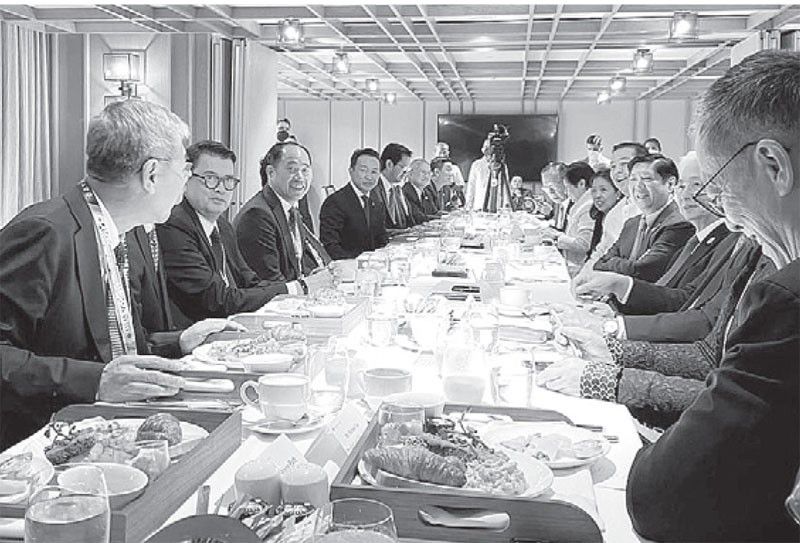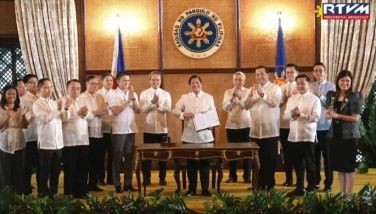Creating an inclusive ASEAN economy


At the 2022 ASEAN Summit last week, while waiting for President Marcos to arrive for the CEO Roundtable meeting with top CEOs from Cambodia, I had a chance to have an informal chat with top businessmen from our host country.
It was quite early in the day – 7 a.m., in fact – to have a meeting among C-suite executives from two different countries. I explained that our president is a very hard working person and always wishes to make the most of his time. The ASEAN Summit, after all, is more than just the plenary session most people see on TV. There are several meetings that happen on the sidelines and all require focus.
That morning’s CEO Roundtable with the Cambodian businessmen was the very first meeting for the President during his ASEAN Summit trip, and we took it as a good sign. It was to be an intimate roundtable with C-level executives; the short guest list was intended to bring out more frank and specific insights on how Philippine companies can find their place in the emerging Cambodian market. It was also an opportunity to gain insights into how Philippine companies can graduate from being small to become medium-size enterprises, and for medium companies to become large entities, and this via international expansion in a developing market like Cambodia.
For the leaders of the large Philippine companies that were with us in the meeting, it was an opportunity to connect with possible business expansion partners in Cambodia. For SMEs, specifically the ASEAN Business Award winners we also had with us that day – namely FELTA Multimedia, Home Healthlink and Esquire Financing – it was a chance to explore business partnerships in the region.
There are 71 million MSMEs in the ASEAN region, accounting for almost all of the total establishments. What was astonishing to me was how much of the jobs in the region – 85 percent – is being generated by MSMEs; this exceeds our own 65 percent. Considering their important role in job generation and in our collective economic recovery, we must continue to support them. As I emphasized in my report during the ASEAN Business Investment Summit, MSMEs are the true drivers of growth in the region.
That was one of the reasons I invited my new friends from Cambodia to visit Manila and see our beaches, which we are famous for. Seeing how our neighbors like Cambodia and Singapore are presenting a welcoming, back-to-normal face to the rest of the world, it is quite apparent that we are all competing for the same tourist dollars. Many MSMEs rely on tourism, so every little sales pitch helps, especially now that countries in the ASEAN offer so much value to tourists from the West.
I mentioned also to my Cambodian counterparts that Manila is only three hours away and we have direct daily flights. They can even do a day trip: fly to Manila past midnight, arrive early in the morning, conduct their business meetings or due diligence, and be back in Phnom Penh by 10 p.m.
I also shared with the CEOs from Cambodia that the Philippines imports rice, sugar, and corn; the latter we also produce, but not all meet the requirement for industrial uses. They told me that Cambodia exports half of the 11 million tons of rice produced in their paddies, but mostly to Vietnam for milling since they lack sufficient investments in rice milling. I imagine we can learn a lot from Cambodia in terms of rice farming. Their rice production has increased significantly in the last two decades, and I believe the Philippines can contribute to improving the country’s rice value chain. It can be the start of a productive relationship.
It’s all about cooperation. This much was emphasized by the leaders of the ASEAN during the summit. In fact, I was elated to hear that MSMEs and digitalization figured prominently in the discussions among the leaders. These two are central to our current efforts here in the Philippines, and I am glad that, on a regional level, we are on the same wavelength.
During the ASEAN Business Advisory Council meeting, it was emphasized that the region still faces several historic threats on several fronts. There are the risks brought on by climate change; then there’s the global economic risks manifested in rising inflation, disruptions in our global supply chain and energy insecurity; and then there are still the unresolved risks in our own backyard here in Asia.
Fortunately, the region has a young, technology-driven population and countries in the ASEAN and its dialogue partners among the developed nations are deeply interested in working together to realize a truly integrated regional economic community.
The ASEAN Mentorship for Entrepreneurs Network or AMEN fits perfectly into this integrated future for the region. AMEN is our legacy project from the Philippines chairmanship back in 2017, and I am happy to report that it is well underway for its second phase. Thanks to the Japan-ASEAN Integration Fund, which funded the program for a second time, we will pilot a full-blown mentorship program in all 10 member states of the ASEAN. We will train MSEs and create a pool of mentors. We will leverage digital technology to expand reach across the region, and we will establish the AMEN Mentorship Institute to ensure the project’s sustainability.
AMEN’s goal is knowledge exchange among entrepreneurs and mentors across the ASEAN. This cooperation is crucial as we move towards economic integration. From our experience here in the Philippines, and after 17 years of mentoring thousands of entrepreneurs, an important ingredient is strong public-private partnership. We are fortunate that the President has pushed public-private partnership as a key strategy, and his support is making all the difference.
With hope, AMEN will be mainstreamed as an approach for achieving inclusive growth and creating more jobs in ASEAN, and bringing prosperity to all.
- Latest
- Trending


























 Exclusive
Exclusive



